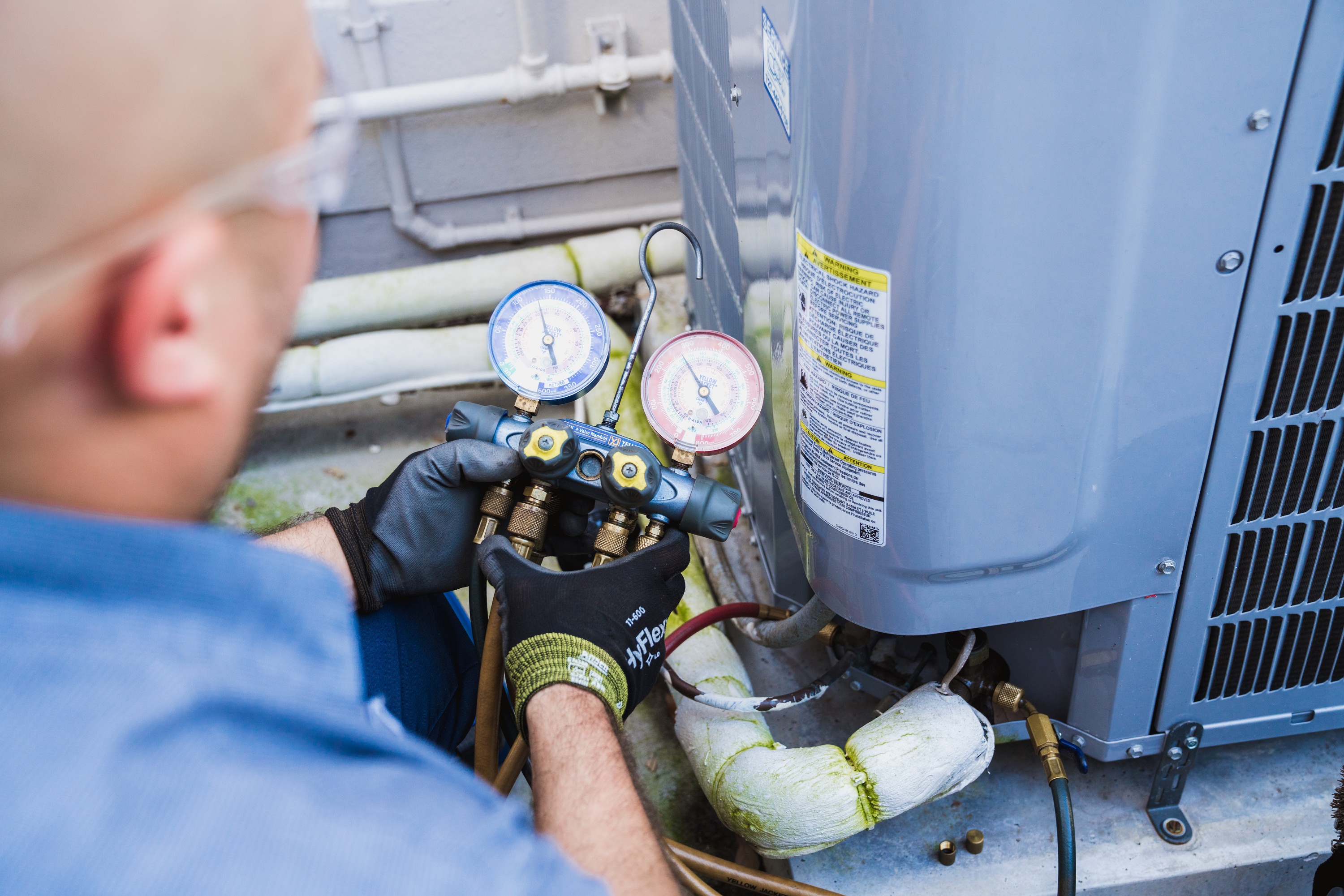
Ductless Mini-Split Systems
As the name implies, the first advantage of this system is that there’s no complicated system of ducts running through your attic or between floors. If you live in an older home, running ductwork sometimes isn’t feasible. Instead, mini-split systems are comprised of two main components: the compressor and an indoor air handler. Like in a central AC system, the compressor uses refrigerant to cool the air before sending it into your home via conduit lines instead of large ducts. Air-handlers feed air into the room where it’s installed, usually close to the ceiling. It pulls old air out of the room and sends it back to the compressor to be cooled. In the winter, the compressor draws hot air from outside and sends it inside to the handler. Unlike a traditional central AC system that cycles on and off throughout the day as needed, the air-handler is always on, circulating air to maintain a constant temperature. Despite the constant use, a mini-system uses less power than a central system. While a central system will cool the entire home, the mini-system only cools the rooms you’re in. You can choose to turn off the handler in rooms that you don’t frequent and save even more on your monthly power bills. While you will save money in the long-run, the installation costs of a mini-system are usually higher than a central system. It’s also difficult to find qualified professionals who are willing to install or repair these systems because of their complexity. Some homeowners also don’t like the aesthetics of the air-handler as they can clash with the decor in the rest of room. However, for offices, hotels, and vintage homes, the mini-split system is a good option.
Central AC Systems





Leave a Reply